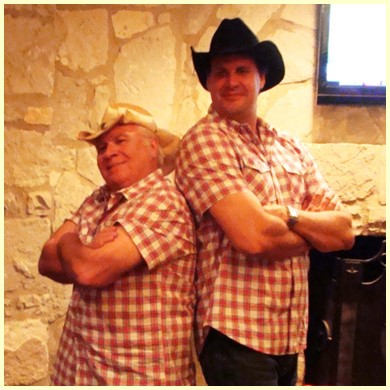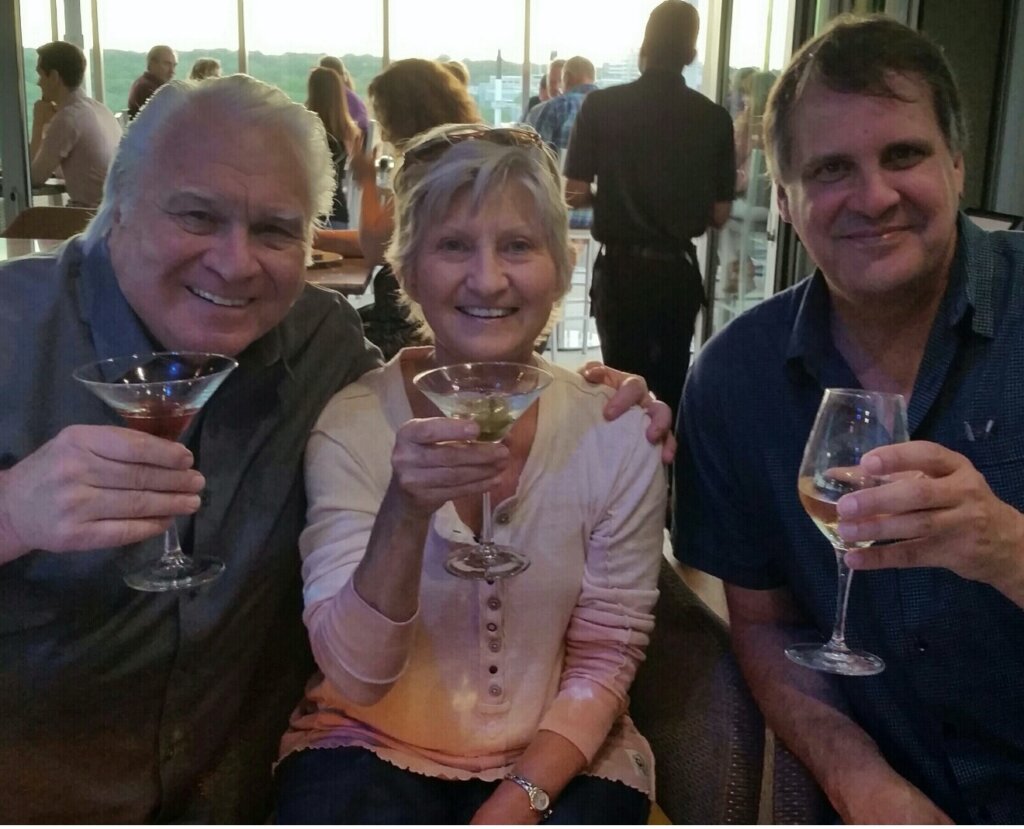Thirty Years Of Stories Too Good Not To Tell!
Todd Ricketts. Wow, where to start? Internationally known for his research, publications, lectures and professional leadership. Highly respected in academia; one of the cornerstones maintaining Vanderbilt’s #1 national audiology ranking for 20 consecutive years. His colleagues know him as a clear-thinking, level-headed, no-nonsense guy who can always be counted on for his integrity and loyalty.
Now that we’ve made all that clear – on to my story!
In the beginning
It all started 30 years ago. Brad Pitt and Legends of the Fall were on the Big Screen, and Tom Petty was singing about Mary Jane’s Last Dance. While I had dropped my ASHA membership 5 years earlier (when we formed the AAA), I couldn’t resist going to the ASHA meeting one more time, given that it was in New Orleans. My dinner group decided to turn in early (that’s midnight in New Orleans), but I had not had my fill of raw oysters, so I headed to Felix’s, a dive oyster and beer place, just off Bourbon Street. I didn’t expect to see any other audiologists, and I was surprised when I entered to find Fred Bess holding court at one of the tables. I was helping teach the hearing aid classes at Vandy then, so Fred was sometimes my boss. Also at the table was friend and colleague Ruth Bentler, with some of her University of Iowa students, and so, of course, I joined them.
As the night went into the wee hours of the morning, and one-by-one people were leaving, I was left talking with one of Ruth’s PhD students—a guy named Todd Ricketts—a Midwest farm guy like myself, so we immediately connected. We also connected on talking hearing aids; even though still a student, this guy really knew his stuff. Ruth and I had just published an article on supra-threshold loudness testing, so it was logical that Todd started telling me about a loudness-based hearing aid fitting approach he was developing. He was working with Ruth, calling it the RAB (Ricketts And Bentler). Putting on my “mentoring hat,” I immediately told him that if he wanted his fitting approach to go over big with clinicians, the acronym had to be a real word, or at least sound like a real word. After all, Robyn Cox had just introduced a similar procedure called VIOLA (Visual Input-Output Locator Algorithm). We ordered another round of beers, and before they were finished, we added an “I” for Intensity and a “T” for Targets to the procedure title. We now had ourselves a RABIT! “Think I’m gonna do a COSI and a RABIT on my next patient.” Yeah, that’s the kind of clinical talk we like to hear!
Quite the night. A new friend, eating raw oysters, drinking Abita, and talking about RABITs until 2 a.m.— but stranger things have happened in New Orleans. The always-productive Todd published his hearing aid fitting approach a year or so later in Ear and Hearing. Perhaps because of PETA concerns, the RABIT returned to being the RAB. Sorry to say, I don’t believe it ever hopped out of Iowa.
Our First Collaboration
In the 1990s, I was a consultant for Siemens Hearing, and served on their Clinical Audiology Research Team. In 1997, we introduced Prisma, the first digital dual-microphone product, and we needed some independent research to demonstrate its edge over the competition. I called Ruth. She had some other projects going on, but suggested I contact “her boy Todd”, who was now an assistant professor at Purdue, and had set up a lab for doing hearing aid research. Oh yeah, the raw-oyster RABIT guy. I soon was off to West Lafayette.
It was a great two days (and nights) talking hearing aids, and Todd was on-board with the study. When leaving, I suggested that the two of us write a summary article on directional microphone hearing aids, which just happened to be my dissertation topic 20 years earlier. A week or so after I got home, Todd already had prepared the first draft, and we had it submitted a month later (published in American Journal of Audiology). As you might expect, Todd efficiently finished the Prisma study, with some help from his rising-star PhD student Sumit Dhar. That too was published in 1999. As many of you know, these two articles started an unbelievable burst of research and publications from Todd on directional processing, which continued for the next two decades.
Colleagues at Vandy
Not too long after my Purdue visit, I got a call from Fred Bess. He was filling a faculty position, looking for someone who knew hearing aids, and he had talked to Ruth. She had recommended “her boy Todd.” I think Fred had already made up his mind when he talked to me, but I gave him a resounding “absolutely, hire him” and I soon had a buddy to teach with when I visited Vandy. Todd, being Todd, insisted that when I came to town every three months or so, I stayed at his house with his family, not at some hotel. Not certain if this ever was cleared with wife Patty, but sure worked for me.
Todd and I had pretty similar thoughts, and so it actually was fun to put together a couple comprehensive hearing aid classes, and then share the teaching. This also was happening during the start of the Vandy/CMU AuD distance learning program—Todd and I each taught an online hearing aid class for this venture. A big part of our classes was probe-microphone measures, and what we immediately started hearing from the distance-learning people (most of whom were experienced clinicians) was: “This is all great, but where can I go to get hands-on experience?”

The Workshops (and Tours)
Todd and I realized, that the two of us could pretty easily put on a workshop, and we had enough equipment and student helpers at Vandy to make it a truly hand’s-on experience; we scheduled the first 3-day event. The workshops were way more successful than we had imagined, and we soon were doing four a year—over a 15-year period. We probably conducted around 40, and no one was really counting.
But let’s go back to our first workshop. The first morning (Thursday) everyone had introduced themselves, so it only seemed reasonable that on the second morning, to help people get to know each other (~40-50 audiologists in attendance), each person would tell us how they spent their first night in Nashville. We were stunned that about ¾ of the participants stated that they stayed in their room and watched a movie. WHAT? That’s not what you do in Nashville. Todd and I immediately came up with “Gus and Todd’s Divey Bar Tour.” It was from that day forward, that at all workshops, on Friday night, Todd and I would lead the group on a downtown Nashville Honky-Tonk tour, usually starting at 7:00 at Robert’s, then to Tootsies, and then to numerous other places along Broadway. All attendees had learned the words to “The Perfect Country And Western Song” that day in class, and it was performed at each stopping point.
For Todd and I, the night typically ended at the White Castle drive-through, with Gus somehow volunteering to be Saturday’s 8:00 a.m. speaker (a few hours later). Neither of us ever missed one of the tours (or were late the next morning). Now, I’m not sure if this should be taken as a compliment or not, but as years went by, it was common for attendees to say: “I really just came to the workshop for the Divey Bar Tour!”
In the early years of these workshops, disposable cameras were popular. Before each workshop, I would stop at the tourist store next to Tootsies, and buy two or three, give them to some fairly responsible tour members, with the caveat that they have two copies made, and send one batch to me. I still have two shoe boxes full of these photos. I suspect some real treasures are in there, but I’m a little scared to look.
Following Todd Into Town
Todd of course is a very popular guest speaker for state and regional meetings. Following him at the same meeting a year later has never been fun. “So Dr. Mueller, will you be presenting all your latest yet-to-be-published research like Dr. Ricketts did last year?” No, I don’t really have any research. I just present someone else’s research from years ago (and hope you don’t remember).
The worst case, however, was a couple years ago when I spoke at the annual audiology meeting in Norway. The night before my talk, a Norwegian audiologist I knew asked: “So Gus, have you been training for tomorrow night?” Hmm. Training? I did prepare my talk, but didn’t know what was happening afterwards. “Training for what, I asked.” My friend then replied that a year earlier, when Todd was there, after his talk, one-by-one he arm-wrestled most every guy in the bar—the Norwegian fellow thought maybe that was a U.S. audiologist thing. I quickly informed him that the only thing that I would be arm wrestling would be a double-shot of Linie Akvavit!
Recent Years
The workshops at Vandy fizzled out a few years back when hotel prices sky-rocketed. The Honky-Tonks are so packed these days, that a bar tour would never be possible. I don’t teach much there anymore either, so my in-person Todd-Time has been significantly reduced. But that hasn’t stopped our collaborations. We’ve managed to publish an article every couple years, and most significantly, with the help of Ruth Bentler, have put together four text books. As you might guess, Todd gets assigned the lead on the “signal processing” chapters, and anything else that requires a good math knowledge. Gus does the surrounding fluff.

In Closing
That’s about all I know about Todd Ricketts. Did I say he is a clear-thinking, level-headed, no-nonsense guy who can always be counted on for his integrity and loyalty? As I have mentioned, Todd and I have co-presented, back-to-back, many, many times. Over the years, there have been a few instances, when after Todd listens to my talk he asks, in a nice way: “Gus, are you sure that the research evidence strongly supports a couple of the conclusions you made?” My answer, with tongue only partially in cheek, has always been the same: “Todd, if you say it with confidence, often enough, for long enough, it eventually becomes the truth!” That adage might also apply to portions of this little vignette.

